Small Farming For Profit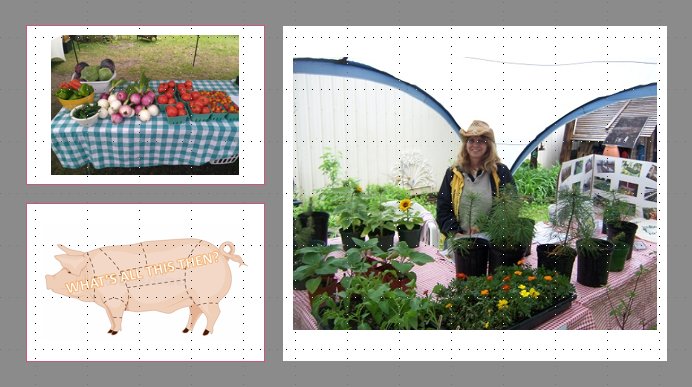 Diversifying your product offering is one key to small farming for profit Diversifying your product offering is one key to small farming for profitIf you have a small farm, or are contemplating small farming for profit, you probably want to know how much profit is possible. In a recent article I wrote about the High Income Market Garden Here's some data from my experience to give you an idea if a small farm is the business for you. Our first year operating a Community Supported Agriculture (CSA) market garden, we sold the equivalent of 10 full shares. While researching for for this launch, I discovered that CSA market gardens tended to have the highest net incomes of all marketing models, so that became our centrepiece operation. We also wanted to integrate small livestock into our production model. When properly managed, livestock can contribute to soil fertility through their manure, which
is rich in nitrogen, phosphorus, and other nutrients essential for plant
growth. Joel Salatin at Polyface Farms is a great example of this (on a larger scale)
Integrating livestock into a farm can also help to diversify the farm's
income streams. Naturally raised pork, chicken and eggs proved to be popular with
our customers. You can learn more about all these topics with the Bootstrap Book series. That might not sound like a lot, but remember this was literally a bootstrap operation; income from sales paid for all our equipment and supplies and our part-time farm help. It was also our learning year. 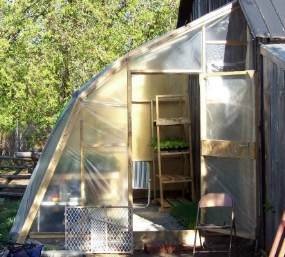 Year 1 farm income paid for our lean-to greenhouse Year 1 farm income paid for our lean-to greenhouseNote that we could easily have done this whole garden ourselves and saved the cost of the part-time helper, but I was working off-farm quite a lot and we wanted to be sure we could harvest and deliver on schedule.
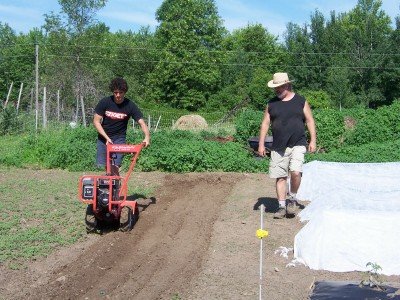 Me and a helper in the BIG garden Me and a helper in the BIG gardenFree One-Acre Farm Plan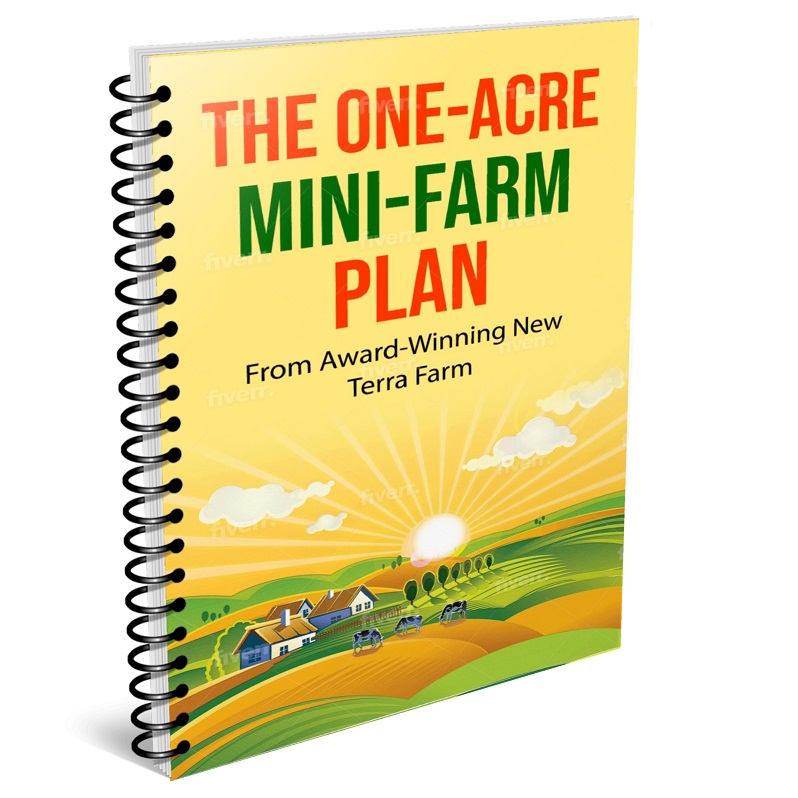 Get my FREE One-Acre Farm Plan and learn how to raise pigs, chickens and more, integrated with an organic market garden, to
make more money from your small property. Enter your best email and the Report will be sent to you right away. Equipment
and supplies cost us about $7,000; we also had about $14,000 in salary
costs for 3 part-time farm helpers and delivery drivers. So total costs
came to about $21,000; gross profit therefore was about $34,000.
Small farming for profit for the young farming couple
I think a farm couple with proper equipment and approach could look after a one-acre market garden by themselves. This is a trade-off, of course, since this would require more of an investment in equipment. See my 5 Acre Farm Plan for an idea of the equipment I consider necessary. I would also suggest this young couple get this resource as a good starting point for their market garden.
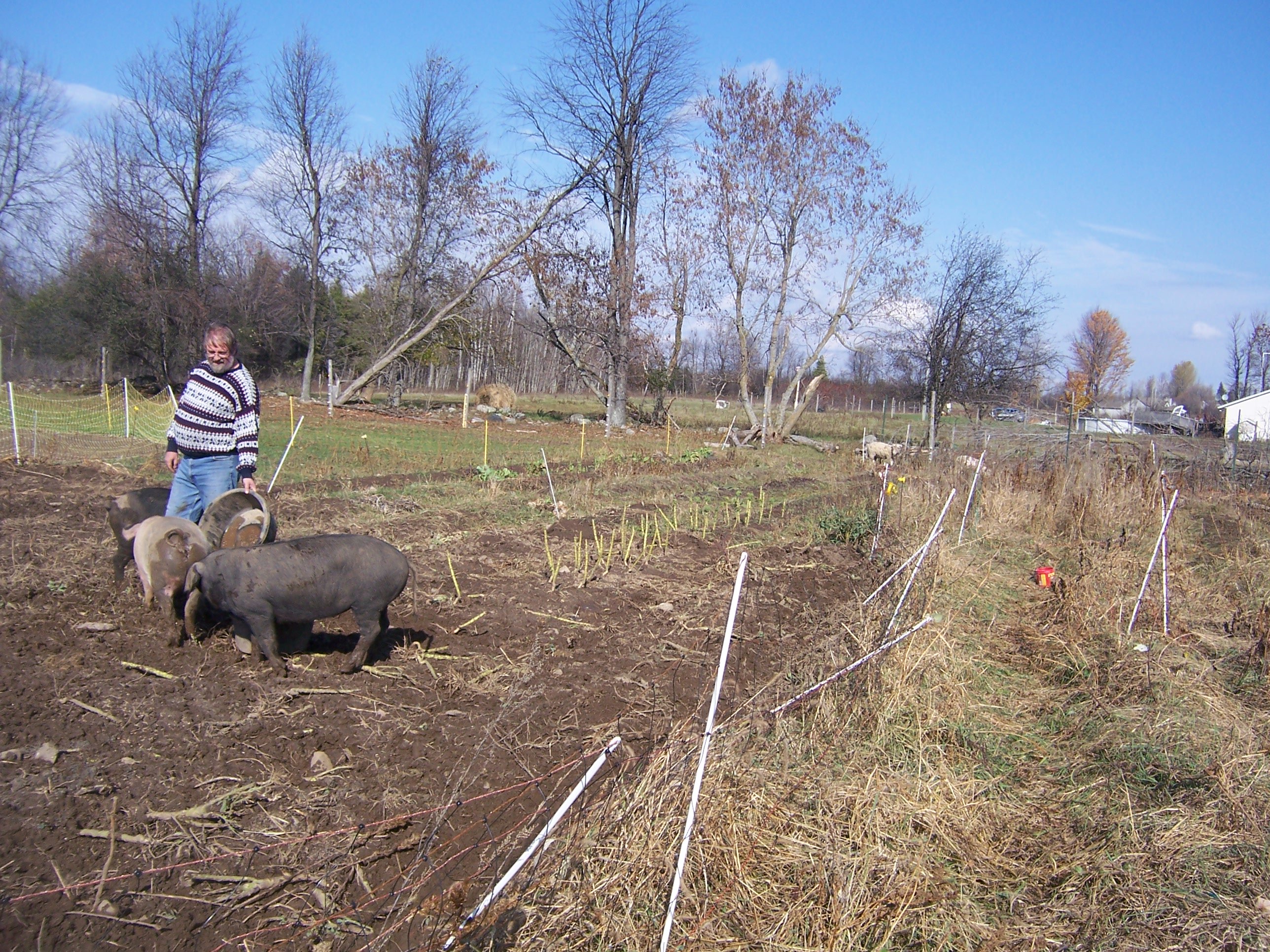 Our piggies help clean up the garden in the fall Our piggies help clean up the garden in the fallSecond, this is probably also the minimum size to justify an
investment in equipment to mechanize your operation. Tractors and other
'heavy metal' are expensive to own; you need to use them a lot to
justify the expense.
You could add everything from bedding plants to bees,
limited only by your ability to manage. These additional sources of
income make it feasible for a couple to live and work solely on their
small farm, and make a right living.
More Resources For The Small Property OwnerChapter 2 - The Homestead Plan: The Self-Sufficient Backyard Raise chickens, pigs and a productive organic garden: The Homesteader Book Bundle If you can find 50 sq ft, you can have fresh egg for breakfast (and maybe barter): The Eggs Factory If you need to build it for your homestead, the plans are here: 16,000 Woodworking Plans The Bootstrap Book Series: Practical Plans that Work In The Real World
|
See Something You Like? Share!
Got questions to ask, stories to tell?
Share your organic market gardening question, or comment, or story.
Recent Articles
-
Learn how much to feed chickens before you bring your birdies home
Nov 02, 25 10:36 AM
You've ordered your birdies, now make sure you understand how much to feed chickens fo a healthy and happy flock -
How to start a CSA farm business
Nov 02, 25 06:33 AM
How to Start a CSA Farm Business (and Actually Make Money Doing It) -
A Layered Food Storage Plan for Emergency Preparedness
Oct 29, 25 09:48 AM
Build a smart, layered food storage plan for emergencies, prepping, and long-term survival. Discover how to stockpile food the right way for every situation


